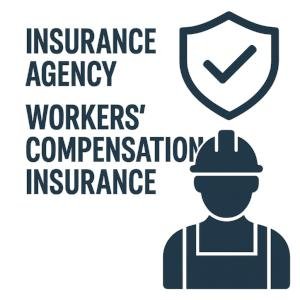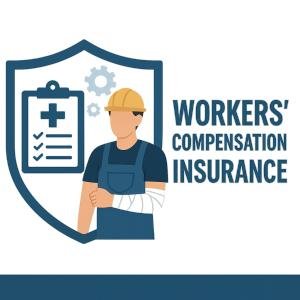
Creating a Safety Culture That Protects Workers’ Comp Margins in Home Health
August 4, 2025
Illustration depicting workers’ compensation theme with handshake and shield.
In the competitive landscape of senior living facilities, managing operational costs is paramount to maintaining both quality care and financial stability. One critical, yet frequently enough overlooked, component influencing insurance premiums is the accuracy and cleanliness of workers’ compensation loss runs. Thes detailed records of past claims play a meaningful role in underwriting decisions and premium calculations. For senior living facility operators, proactively cleaning up and accurately presenting workers’ comp loss runs can lead to more favorable rates, improved risk profiles, and enhanced overall cost management. This article explores practical strategies and best practices for organizing and refining loss run reports to optimize insurance outcomes in the senior living sector.
Table of Contents
- Understanding the Impact of Workers’ Comp Loss Runs on Senior Living Facility Insurance Costs
- Analyzing Common Issues in Workers’ Comp Loss Runs and Their Consequences
- Strategic Approaches to Cleaning Up loss Runs for Improved insurance Premiums
- Best Practices for Maintaining Accurate Loss runs to Optimize Future Rates
- Q&A
- Wrapping Up
Understanding the impact of Workers’ Comp Loss Runs on Senior Living Facility Insurance Costs
To effectively manage insurance costs,senior living administrators should regularly review and reconcile loss run reports by:
- Correcting any clerical errors or duplicate claims
- Closing out long-past claims that no longer impact risk assessments
- Documenting proactive safety measures and claims mitigation efforts
- Collaborating with insurance brokers to interpret and present clean reports
By taking these steps,facilities not only improve the clarity of their risk profiles but also position themselves advantageously during underwriting,which can lead to lower workers’ comp premiums and enhanced financial stability.
Analyzing Common Issues in workers’ Comp Loss Runs and Their Consequences
One of the most frequent challenges found in workers’ comp loss runs for senior living facilities is inaccurate claims data. Errors such as misclassified injuries or unresolved claims can inflate the apparent risk, leading insurers to offer higher premiums. Additionally, outdated or incomplete loss runs hinder the ability to identify patterns, such as repeated incidents linked to specific departments or times of day. Without addressing these inaccuracies, facilities may face unwarranted financial burdens that could otherwise be mitigated thru proactive risk management strategies.
Consequences of overlooking these issues range from increased insurance costs to strained budgeting for essential facility operations. A detailed review often reveals fixable discrepancies like duplicate entries, closed claims still recorded as open, or claims lacking final settlement details. The table below outlines common issues and their potential impacts:
| Common Loss Run Issues | Potential Consequences |
|---|---|
| misclassified Injuries | Higher premium rates due to perceived elevated risk |
| Duplicate Claims | Inflated claim frequency affecting underwriter evaluations |
| Unresolved/Old Claims | Unneeded prolonged financial liability |
| Incomplete Settlement Data | Inaccurate loss forecasting and rate setting |
Strategic Approaches to Cleaning Up Loss Runs for Improved Insurance premiums
Adopting a strategic approach involves more than just data accuracy; it’s about demonstrating continuous improvement in workplace safety.Partner closely with your insurance broker to present a clear narrative of safety initiatives that have reduced claim occurrences over time.Consider these critical steps:
- Implement targeted safety training programs designed around past incident patterns.
- Regularly review and update safety protocols to align with industry best practices.
- Engage employees in reporting near-miss incidents to prevent future claims.
- Collect and document all corrective actions and outcomes for insurer transparency.
| Risk Factor | Impact on Premiums | Mitigation Strategy |
|---|---|---|
| Frequent minor claims | Moderate increase | Enhanced staff training |
| Severe injury claims | Significant increase | Improved safety equipment |
| Slow claim resolution | Potential increase | Efficient claims management |
Best Practices for Maintaining Accurate Loss Runs to Optimize future Rates
- Timely updates: Ensure all claims are reported and documented promptly to avoid discrepancies.
- Consistent categorization: Classify claims by type and severity to identify patterns and address root causes effectively.
- Regular audits: Schedule quarterly audits of loss run reports to catch errors or misentries before they impact premium calculations.
Additionally, fostering communication between claims adjusters, HR, and safety teams can streamline data accuracy and encourage proactive risk management. Leveraging technology solutions with integrated data validation tools can also help maintain cleanliness in your loss run records, ultimately supporting stronger negotiation positions with insurers.
| Practice | Benefit | Frequency |
|---|---|---|
| Claims Documentation | Improves data accuracy | Within 24 hours |
| Claim Categorization | Identifies risk trends | Monthly |
| Loss Run Audits | Eliminates errors | Quarterly |
Q&A
Q&A: Senior Living Facility Workers’ Comp Loss Runs – Clean Them Up for Better Rates
Q1: What are workers’ comp loss runs, and why are they important for senior living facilities?
A1: Workers’ comp loss runs are detailed reports provided by insurers that summarize a facility’s claims history, including the number, nature, and cost of workplace injuries. For senior living facilities,these reports are critical as they directly influence insurance underwriting decisions and premium rates. Accurate and well-maintained loss runs help demonstrate effective risk management and can lead to more favorable workers’ compensation insurance terms.
Q2: How can unclean or inaccurate loss runs impact a senior living facility’s workers’ comp insurance rates?
A2: Unclean or inaccurate loss runs may reflect outdated, duplicate, or improperly closed claims that exaggerate a facility’s risk profile.This inflated risk perception frequently enough results in higher premium rates or limited coverage options. Insurers may view frequent or unresolved claims as indicators of poor safety practices, which can adversely affect the facility’s financial bottom line.
Q3: What steps should senior living facilities take to clean up their workers’ comp loss runs?
A3: Facilities should:
- Conduct a thorough review of their loss run reports for accuracy.
- Work with insurance carriers to correct errors such as misreported claims or improper claim statuses.
- Ensure all closed claims are properly documented and disputes resolved.
- Implement consistent claims management practices to prevent future inaccuracies.
- Engage with experienced insurance brokers or consultants to analyse and optimize loss run data.
Q4: How often should senior living facilities review their workers’ comp loss runs?
A4: It is recommended that facilities review their loss runs at least annually, ideally prior to insurance renewal periods. Regular reviews enable early detection of discrepancies and provide opportunities to address claims that may negatively affect premium rates.
Q5: Beyond cleaning up loss runs, what other strategies can help senior living facilities reduce workers’ comp insurance costs?
A5: Other effective strategies include:
- Implementing robust workplace safety programs tailored to the specific risks of senior care environments.
- Providing thorough employee training on injury prevention and reporting procedures.
- Promoting early return-to-work programs to reduce claim durations.
- Leveraging data analytics to identify and mitigate high-risk areas or behaviors.
- Collaborating with insurance partners to tailor coverage and controls that reflect actual risk exposure.
Q6: Who can senior living facilities consult for assistance with improving their workers’ comp loss runs?
A6: facilities can seek help from insurance brokers, risk management consultants, or workers’ compensation specialists who have experience with senior living operations.These professionals can assist with auditing loss runs, correcting inaccuracies, and advising on safety and claims management practices that positively influence insurance underwriting.
By proactively cleaning up workers’ comp loss runs and adopting complete risk management strategies, senior living facilities can achieve better insurance rates, enhance operational safety, and improve financial predictability.
Wrapping Up
maintaining accurate and well-organized workers’ compensation loss runs is essential for senior living facilities aiming to secure favorable insurance rates. By proactively reviewing, correcting, and cleaning up these records, facility managers can demonstrate effective risk management and minimize the appearance of unnecessary claims. This strategic approach not only supports better underwriting outcomes but also contributes to long-term operational efficiency and financial stability. Prioritizing loss run accuracy is a critical step toward optimizing insurance costs and safeguarding the future success of senior living operations.
“This content was generated with the assistance of artificial intelligence. While we strive for accuracy, AI-generated content may not always reflect the most current information or professional advice. Users are encouraged to independently verify critical information and, where appropriate, consult with qualified professionals, lawyers, state statutes and regulations & NCCI rules & manuals before making decisions based on this content.






